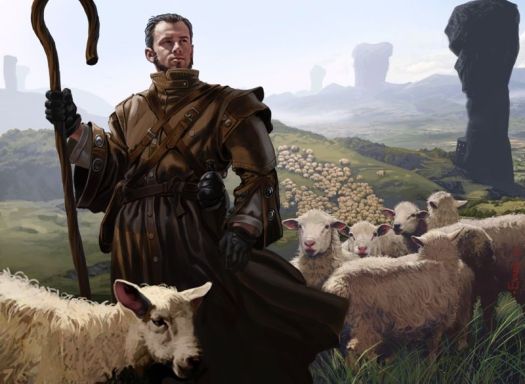Animal Husbandry (technology)
Animal Husbandry is a technology that revolves around the management and care of domesticated animals for various purposes, as a fundamental aspect of rural society. The primary animals raised through husbandry include cattle, sheep, pigs, chickens, horses, and goats, among others. Livestock are typically kept in close proximity to settlements in pens, pastures or barns.
Contents
Breeding is essential to maintain and improve desired traits in animals. However, selective breeding techniques are limited, mainly relying on natural mating and some rudimentary selection based on observed characteristics. Feeding animals largely depends on available natural resources like grazing lands, crop remnants and forage. Supplementary feeding with grains or other foodstuffs is also common, especially during harsh seasons when natural resources are scarce.
Sheltering animals is important for protection from harsh weather conditions and predators. Basic shelters or enclosures are constructed using local materials such as wood, thatch or stones. Animal husbandry practices are often shaped by traditional knowledge passed down through generations and are influenced by local customs, climatic conditions and the availability of resources. The understanding of animal health and veterinary care is scant indeed, relying mainly on observation and traditional remedies.
Tech 2: Settled Farming
Rooted in the Neolithic era, animal husbandry began the transition from nomadic hunting to settled farming, marking the genesis of human-animal coexistence. his era witnessed the initial stages of domestication, where animals were selectively bred for docility and utility. Present societies still at this level construct rudimentary shelters to protect their domesticated animals, ensuring their safety and well-being. Selective breeding practices do exist, but are crude, driven by the necessity for traits like milk production, wool quality and strength.
For cultures like this, there's an interdependence between humans and animals. The survival of both are intricately linked, fostering a sense of mutual reliance and coexistence. Animals provide food in the form of meat and dairy, materials like wool and leather for clothing and shelter, and labour for agricultural tasks. Their utilitarian value is central to the sustenance and progress of societies that still exist at this technology.
Animals are imbued with spiritual importance, often attributing them with symbolic meanings or associating them with deities or natural forces. Some animals hold revered statuses and are depicted in art and rituals, signifying fertility, strength, protection and other qualities. They feature prominantly in mythology and folklore; stories and legends involving animals convey moral lessons or cultural beliefs, further emphasizing their importance within the cultural fabric of these societies.
knowledge concerned with animals that are domesticated and raised for meat, fibre, milk, eggs and other products. It includes day-to-day care, selective breeding and the raising of livestock. Principle livestock species include cattle]], horses, sheep]], goats]], camels, chickens, geese, ducks, donkeys, dogs, water buffalo, llama, rabbits and reindeer. Aquaculture is a form of animal husbandry related to fishing.
Like all technologies, animal husbandry is distinguished by its techniques, processes and societal relationships. The page below describes the technology according to its sub-technologies (shown as minor headings). Details are further classified into tools, culture, blocks, improvements and associated references.
DEV-6
Domestication of Animals
Describes the mutual relationship that came to exist between some animals and humans, who learned to have influence on their care and reproduction. This includes the capture and taming of wild animals, as well as the rearing of animals bred in captivity. This greatly increased the food supply and expanded the variety of materials and product amounts available for tools and cultural development.
- Tools: bits, harnesses and traces; manure used as fertilizer.
- Construction: the mix of mud and manure is used to make wattle and daub, a form of plaster that makes standing houses waterproof.
- Sheltering: the use of rock enclosures and pits, with rudimentary corral-making and animals pens.
- Culture: for protection against the elements, owners and animals share indoor spaces with their livestock (-1 health).
- Blocks
- Greenspace: areas in settlements are carefully maintained and planted with nutrient-rich plants to serve as grazing areas for animals; these are raked and the manure collected for other uses.
- Improvements
- Pastures: natural grazing lands are seeded and maintained in order to promote growth and water-capture, providing sweet, hearty meadows and hinterlands with plenty of forage. May exist in up to two T(4-6) hexes per reference. Adds +1 food, +1 labor. Includes a clean water source.
- References
Working Animals
The employment of the muscle power offered by horses, oxen, donkeys and dogs, enabling crude but effective forms of transport (at this level of development), ploughing and other uses. Animals must be trained to perform tasks, so that the sub-technology also relates to the basic training that is necessary for animals to perform tasks. Animals used as riding mounts are not permitted at this level of development.
- Culture: an association between animal and master creates an emotional, empathich bond that sustains a positive trusting relationship that lasts for years. Dogs are relied upon for warning and flushing game, and for protecting the home.
